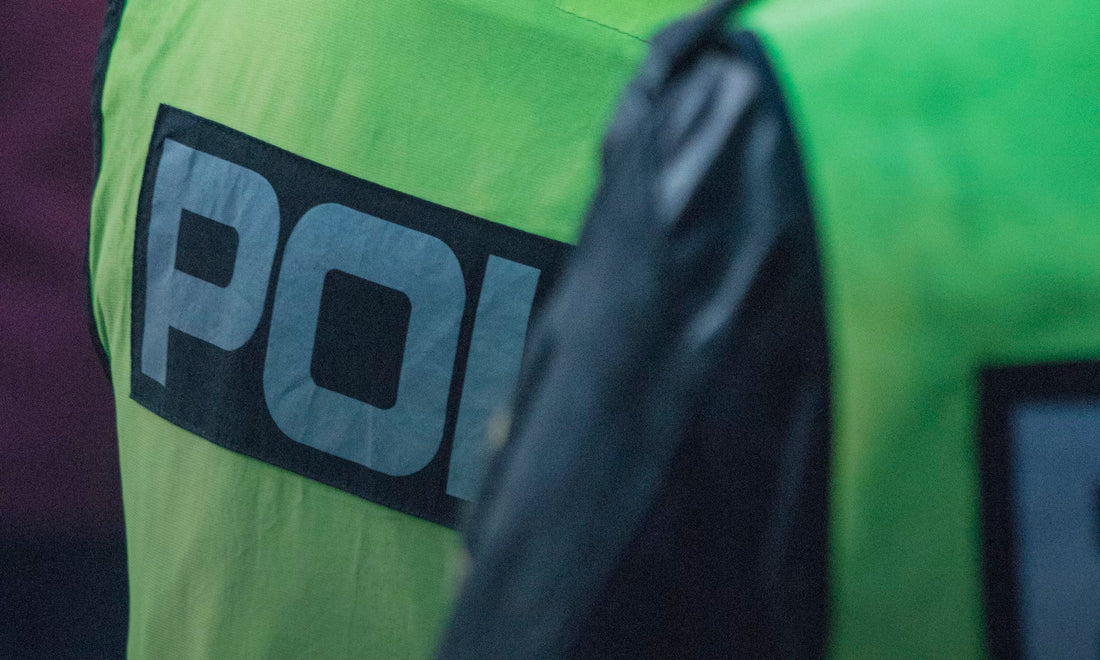
How Visibility Saves Lives: The Impact Behind Reflective Gear and LED Safety Lights
Share
Working near roadways, whether as a first responder, construction worker, or roadside technician, comes with inherent risks. One of the most effective ways to reduce those risks is by improving visibility. Research shows that reflective gear and LED safety lights significantly improve safety outcomes and reduce roadway fatalities, but sometimes the science simply reinforces what experience already teaches us.
As a retired police officer and supervisor, I’ve had several close calls while managing traffic control scenes. I’ve even been struck by vehicles myself, thankfully without serious injury. I’ve also supervised officers whose patrol vehicles were hit while they were outside managing scenes in dark, chaotic conditions.
Early in my career, I was never issued a high visibility vest or traffic cones. If you were working a scene alone, your only option was to position your patrol car as a blocker and hope your emergency lights were enough to get the attention of oncoming drivers in time. That hope wasn’t always enough.
The Importance of Being Seen
Nighttime conditions pose a heightened danger to anyone working on or near roadways. According to the Federal Highway Administration, the fatality rate on U.S. roadways is nearly three times higher at night than during daylight hours, with approximately 76 percent of pedestrian deaths occurring in low-light conditions (Federal Highway Administration, 2022). Enhancing visibility is not just best practice, it is a life-saving decision.
I’ve watched the profession change slowly over the years. We’ve come a long way in recognizing the importance of high visibility gear. A vest may help you during the day, but unless it’s built with reflective striping, it loses much of its effectiveness at night.
Runners, construction workers, and the military have known this for a long time, but law enforcement has been slower to catch up. This delay often exists because many leaders in public safety are drawing from their own time in the field, a time when reflective gear simply wasn’t standard issue.
LED Lights and Driver Response
LED safety lights provide active illumination, meaning they do not rely on headlights to be seen. They shine bright on their own, making them far more effective for early driver detection and overall scene safety. In workplace environments, LED warning lights have been shown to reduce risk and increase reaction time, particularly during nighttime operations (FES Lighting, 2023).
Sequential LED lighting, which flashes in a directional pattern, adds another layer of safety. According to the U.S. Fire Administration, patterned lighting is more effective than random flashing when it comes to managing traffic flow around emergency scenes (USFA, 2022). These lights do not just alert drivers that something is ahead, they help communicate what they are supposed to do next.
The Often Overlooked Value of Traffic Cones
In my early years, getting a set of traffic cones was a bonus, not a guarantee. But traffic cones are not just for channeling cars during a construction detour. Properly manufactured cones have reflective collars that significantly enhance nighttime visibility.
Even something as simple as a strategically placed cone with a flashing light can change the outcome of a scene, whether it is keeping a responder safe on a dark shoulder or guiding a distracted driver away from danger.
Combining Reflective Gear and Active Lighting
While each tool has value on its own, combining reflective gear with LED lights provides the most complete visibility solution. Reflective gear responds to headlights, while LED lights are always shining—active, directional, and bright.
It is a layered approach that allows drivers to see you sooner, react faster, and move more deliberately around your scene.
Conclusion
If you work around moving vehicles, visibility is not a luxury. It is your first line of defense. Whether you are in a patrol uniform, a work vest, or a safety harness, it needs to be visible both day and night. LED lighting should be a standard piece of your safety equipment, not an afterthought.
Cones, reflective tape, and sequential flare systems are not just accessories. They are life-saving tools that give you time and space to do your job safely.
Visibility saves lives. I have seen it. I have lived it.
Be Safe, Be Smart, Be Seen
References
Federal Highway Administration. (2022). Nighttime Visibility. Retrieved from https://www.fhwa.dot.gov/innovation/everydaycounts/edc_7/nighttime_visibility.cfm
Tyrrell, R. A., Wood, J. M., & Carberry, T. P. (2004). On-road measures of pedestrians’ estimates of their own nighttime visibility. Journal of Safety Research, 35(5), 483–490. Retrieved from https://www.sciencedirect.com/science/article/abs/pii/S0022437504000908
FES Lighting. (2023). LED Lighting in the Workplace. Retrieved from https://blog.feslighting.com/led-lighting-in-the-workplace
U.S. Fire Administration (USFA). (2022). Improving Emergency Vehicle Lighting and Visibility at Roadway Incidents. Retrieved from https://www.usfa.fema.gov/blog/improving-emergency-vehicle-lighting-and-visibility-at-roadway-incidents